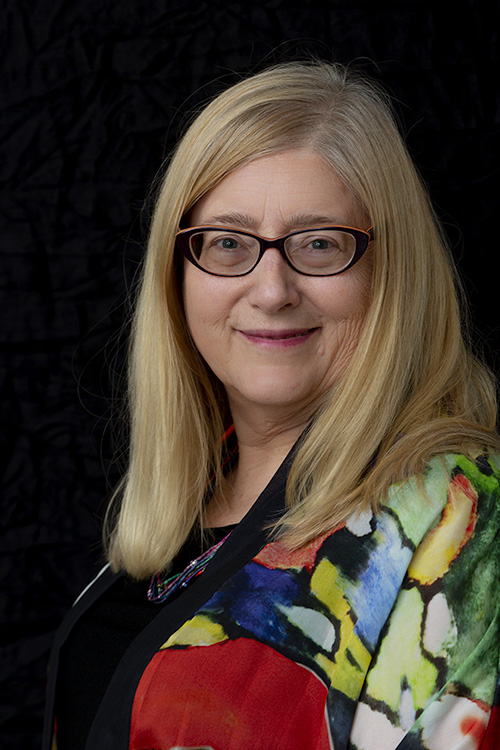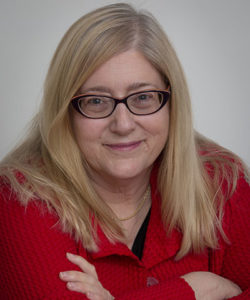Vampire as Crone Metaphor
Five years ago I had terrific fun writing my first novel. Brilliant Charming Bastard is the story of three women scientists in their sixties who join forces for smart revenge when they discover they are dating the same lying dilettante (who is stealing their ideas). I loved pushing back on social stereotypes by writing those vivid older women characters.
But then I thought:
How can I take this to the max?
And then: What if a sexy love story starred a 500-year-old woman?
That was the genesis of my first paranormal romance, Vampires of a Certain Age. The main character, Marion, is a medieval English healer. As a new vampire, she is welcomed by a circle of badass immortalized women. With their help, Marion eventually runs a Chicago blood bank. Women who read that book asked for stories about the other women in the novel. Those readers inspired The Vampire Matriarchs, my series that is now in the works.
While writing the prequel (The Vampire Vivienne), I’ve been pondering why vampires make such great metaphors for badass older women. Vibrant older sexuality is one reason. That’s how this series started, after all. But there’s much more to this metaphor (and to the series) than Elderotica.
For example, when “The Change” arrives for mortal women, no one explains to us all the ways our bodies become different. Same thing when a human woman becomes a vampire: It’s pretty much trial and error, and heaven help the new vampire who walks outside on a sunny day.
Let’s not forget that old bugaboo, looking older. There’s a cool twist on this one for vampires: The appearance of immortalized women never changes, so if they want to stay in one place for decades, they end up doing things like dying their hair grey to try to look older. Either way, it’s all about disguising our age.
Related to that is invisibility. If you’ve been overlooked by a sales clerk (or by your boss when it’s time for a promotion), you’re way too familiar with this problem from a mortal standpoint. The vampire version: Nothing in the mirror. No image at all. That parallel didn’t come up in my first book, but does in the prequel.
And with their long lifespans, echoing our own long lives, Matriarchal Vampires can pass along all kinds of wisdom to the younger women coming up. It’s the Grandmother Hypothesis on steroids.
Another key to crone badassery is mutual support. The vampires in my first book find their posse, whether it’s by running a brothel or a blood bank together. That really resonates as I see older women gather in churches, in political organizing, and most recently for me, at a writing retreat in an Italian villa hosted by author and book mentor Ericka Lutz. The women writers at that gathering bonded instantly. I’ll always be grateful for the support they offered for my vampire series regarding themes, cover designs, and grappling with the nitty gritty of ethical vampire existence (including the suggestion that feeding on rodent blood is like eating tapas!).
Then there’s courage. I’ve been reading about the abuelas who resisted during Argentina’s “Dirty War,” when so many people were disappeared. Those older women showed incredible bravery as they put their lives on the line for the missing. We crones are too old for fear, and that goes double for vampires. The vamps in my books mostly feed on rodent blood (or, in the case of the vampire-run blood bank, there’s ethically sourced human blood). But when crone vampires encounter violence against women, they suddenly develop a taste for the blood of a predatory human.
While my vampire novels are historical, the themes resonate with the times in which we find ourselves. Rebecca Solnit wrote a compelling article for the Guardian about the reason why older women are particularly active now: We remember times when harassment was normalized and reporting rape was taboo. She writes, “It was feminism that exposed the ubiquity of child abuse, rape, sexual harassment and domestic violence, that denormalized these abuses that were so much part of patriarchal society. And still are, far too much, but the dismissive, permissive attitude of the past is past, at least in mainstream culture.”
Solnit is writing about feminist power: not power over another, but the kind of power that creates freedom, that stops violence. That concept is foundational to The Vampire Matriarchs series because the vampire is, above all else, a symbol of power. The premise of classic vampire tales is that these creatures embody a kind of power that is evil incarnate. Powerful older women have often been caricatured (as in Disney villains like Maleficent). The aim of my books is to create a counter-premise: to show that power in the hands of women can be power in support of freedom, opportunity, and growth for all.
A Crone Metaphor?
One of my favorite epigrams is by Muriel Rukeyser, who said, “The universe is made of stories, not of atoms.” I love that saying because I believe we expand what is possible through our stories. When I was on retreat in Italy, an epigram of my own arrived at my fingertips:
The past is with us, the dead are real, and imagination is the servant/mistress of reality.
Maybe it was the ancient architecture at the villa. Maybe it was my character Vivienne the Swordswoman speaking to me. Whatever the reason, that sentence is something to remember as I celebrate my own long life and explore the afterlives of a circle of undead women.
For all of us, as we grow in wisdom and continue in courage and passion, may the reality of our long lives be as vibrant as the life of a fifteenth century swordswoman.



2 Responses
Your vampire books sound amazing Stella but I’m downloading Brilliant, Charming Bastards first, now as we speak! How was it writing with someone else?
Thanks Kisane! Enjoy the Bastard!
The writing retreat was great. Wonderful to be with other Women Writers of a Certain Age for a week!